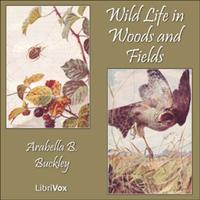THE ANT-HILL
THERE is a big ant-hill in the wood on the way to school. It is at the foot of the old oak tree, near the path, and is almost as tall as Peter. It looks like a loose heap of leaves, mixed with sticks and earth. It is broad at the bottom, and round at the top.
When we come home in the evening all is quiet on the ant-hill. We cannot see even one ant outside. It looks as if no one lived there. But when we pass in the morning, and the sun is warm and bright, we can see the ants creeping out of the cracks and running about the heap.
They are as big as a grain of barley, and have a tiny knob in the middle of their body. They have long feelers and strong jaws. They bite hard of you touch them. But they do not sting with their tails, as our house ants do.
At dinner-time we find them still more busy. They have opened many holes in the hill, and hurry to and fro. Some fetch bits of leaves and sticks, and add them to the heap. Others bring in food. One day Paul saw a number of ants pulling a dead worm to pieces. Then each ant carried a tiny bit in her jaws to the hill, and went in at a hole.
Sometimes the ants bring some little white lumps in their mouths out of the hill. Peggy's father, the gamekeeper, gives these white lumps to his birds to eat. He calls them ant-eggs. But Paul says they are not eggs. They are baby ants shut up in silk bags, and they are called "cocoons." Real ant-eggs are much smaller. When the baby ant comes out of the egg it is blind and has no legs. It is called a grub. The nursing ants feed it with honey, and it puts a silk thread out of its mouth and spins a bag round itself.
When the bag is done, the nurses cannot feed the grub anymore. So they take care of it. They carry it up to the sunshine by day, and down below at night. Inside the bag, the grub grows into a real ant, with eyes and legs. Then the nurses help it out of its prison, and it begins to work.
One day Paul poked a hole in the ant-hill with his stick. We saw in the ground, under the leaves, a hollow place full of white cocoons. The ants were very angry. Some bit us, others picked up the cocoons in their jaws and ran away, for fear we should hurt their babies.
When we came back in the evening the ants had mended the hill. Every hole was closed, and all the cocoons were safe inside.
One day in summer we saw a number of ants with wings, flying over the ant-hill. Paul says these are the father and mother ants. The ants without wings are the nurses and workers.

